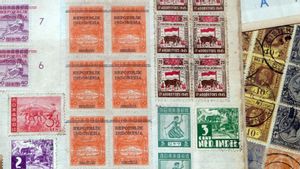JAKARTA - On January 5, 1896, German newspapers reported on the great discovery of a professor in Würzburg, Willhelm Rontgen. He succeeded in creating a type of radiation that became known as X-ray. His discovery of the radiation beam earned Röntgen the first Nobel Prize in Physics and was one of the most important breakthroughs in medical history.
Citing the Siemens Healthineers Medmuseum, the paper reports that the light is capable of taking photos of "a set of weights without opening the wooden box in which the weights are stored." In addition, the light is also capable of taking photos of human hands showing "bones without flesh."
However, the news was not welcomed by scientists. Many scientists responded with bewilderment, while others dismissed the report as a joker's hoax. Even Röntgen's good friend, Berlin-based physics professor, Otto Lummer, seemed to doubt his colleague's discovery.
Röntgen has discovered the use of X-ray since November 8, 1895. Röntgen's discovery happened by accident in his laboratory in Wurzburg, Germany. He was testing whether cathode rays could pass through glass when he saw light coming from a nearby chemically coated screen. He dubbed the rays that cause the emission of X-rays because of their unknown nature.

Röntgen initially did not publicly announce his discovery. He resigned from his job and was barely seen for the next seven weeks. No one knows what he was doing in the lab. Even his assistant did not know because the laboratory door was always locked.
His wife, Bertha, said it was a "terrible time." Röntgen came home late at night and in a bad mood, barely spoke during his meal and immediately returned to his laboratory. He even brought his bed to his laboratory.
After seven weeks of tireless work and without telling anyone about X-rays, Röntgen decided to publish his findings. He wrote a paper entitled 'On a New Kind of Rays' and included a number of "shadow images" or what we know today as x-rays, as tangible evidence of his discovery.
The most sensational of these images was taken on December 22, 1895. By asking Bertha to place her hand on a photographic plate and “examine” it for 15 minutes, Röntgen took one of the most famous photographs in the world: the bones of Bertha's hand showing a ring. mating that seemed to be floating on his finger.
The early skepticism of the scientific community quickly subsided, for one simple reason: In those days, almost every physics laboratory was equipped with equipment similar to that used by Röntgen. Therefore his experiments are reproducible and confirmed with minimal effort.

X-ray technology has developed rapidly in recent years. In 1905, delegates to the first German Congress of Radiology declared that X-rays were “an indispensable tool in all specialties of human medicine.” Even Röntgen was enthusiastic about the development of X-ray.
In a telegram, Röntgen told the audience attending the Radiology Congress: "I am truly delighted and amazed at what others have made of X-ray discoveries." The rapid progress and potential applications during the first ten years were astounding, but technological developments were only just beginning.
In 1901, Röntgen received the Nobel Prize in Physics. He received the award for the outstanding service he had rendered with the discovery of extraordinary rays. The beam was eventually given the same name as it, x-rays.
*Read other information about TODAY's HISTORY or read other interesting articles from Putri Ainur Islam.
TODAY'S HISTORY MoreThe English, Chinese, Japanese, Arabic, and French versions are automatically generated by the AI. So there may still be inaccuracies in translating, please always see Indonesian as our main language. (system supported by DigitalSiber.id)













